
For the past 18 months, Polar has been making steps towards a Whoop competitor. Back in May 2024, they announced the Polar 360, which was a business version of such a device, aimed primarily at healthcare scenarios and workplace/wellness entities. Then, earlier this summer, they announced it’d be coming to consumers on September 3rd. At the time, it lacked a name, or many details, but, they did commit to it requiring no subscription.
Now, we find ourselves with all the details, albeit perhaps not the details we wanted.
The new consumer-focused version of the Polar 360 is called the Polar Loop (the same name the company used back in 2013 for a related wearable band). The new Polar Loop is virtually identical in every way to the existing Polar 360. Same sensor package, same internal hardware, same app, and same features.
In fact, there are only two minor differences:
1) The Polar Loop has a metal clasp/shell (with various colors), versus plastic on the Polar 360
2) Polar slightly expanded the internal battery to get an additional 1-2 days of battery life compared to the Polar 360
That’s both good and bad, as I’d find out. I’ve been using the Polar 360 for a bit now, in preparation for switching over to the Polar Loop. Effectively, the only difference to my daily life would be a different color shell and a few extra days of battery life. Akin to going from a 41mm Apple Watch to a 45mm Titanium Apple Watch. Thus, making my review process faster.
Except, before you jump on the anti-Whoop train, we need to talk about where the differences are. Because they are vast, and very real.
The Tech Details:
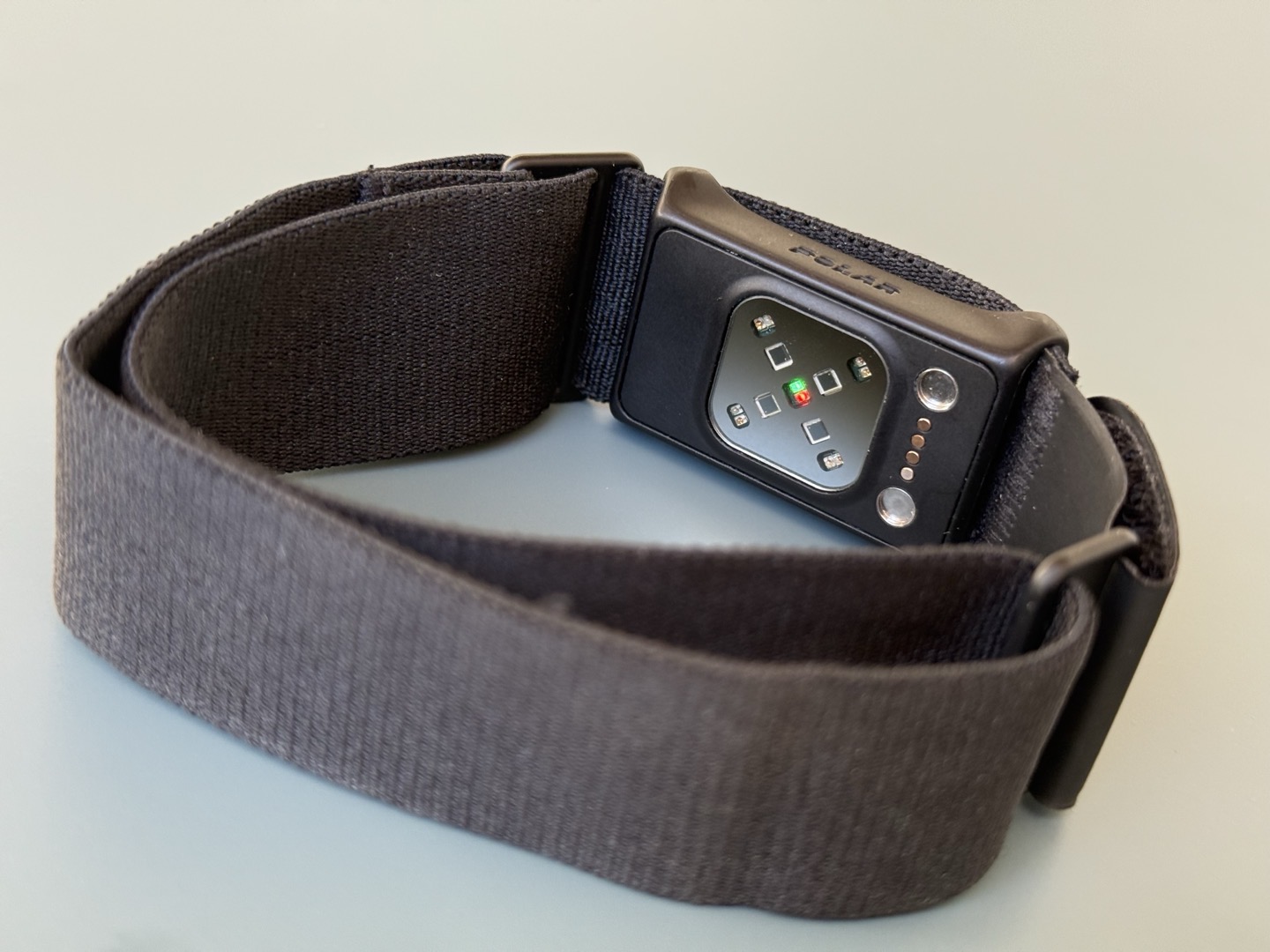
(Above, the Polar 360, which Polar has confirmed is identical to the Polar Loop, except for a slightly bigger battery and non-plastic casing)
First up, there are some tech bits to talk through. Though, frankly, you can sum up this entire band with:
– Small 29g band with no display (just like Whoop)
– Polar’s Precision Prime optical HR sensor
– Battery life of 8 days
– Comes in three color options
– Price: $199USD, 179EUR, 149GBP
– No subscription cost, everything is included
– Extra band color options priced at $29/19EUR/15GBP
See, that’s what you wanted to know. Oh, here’s the band options:
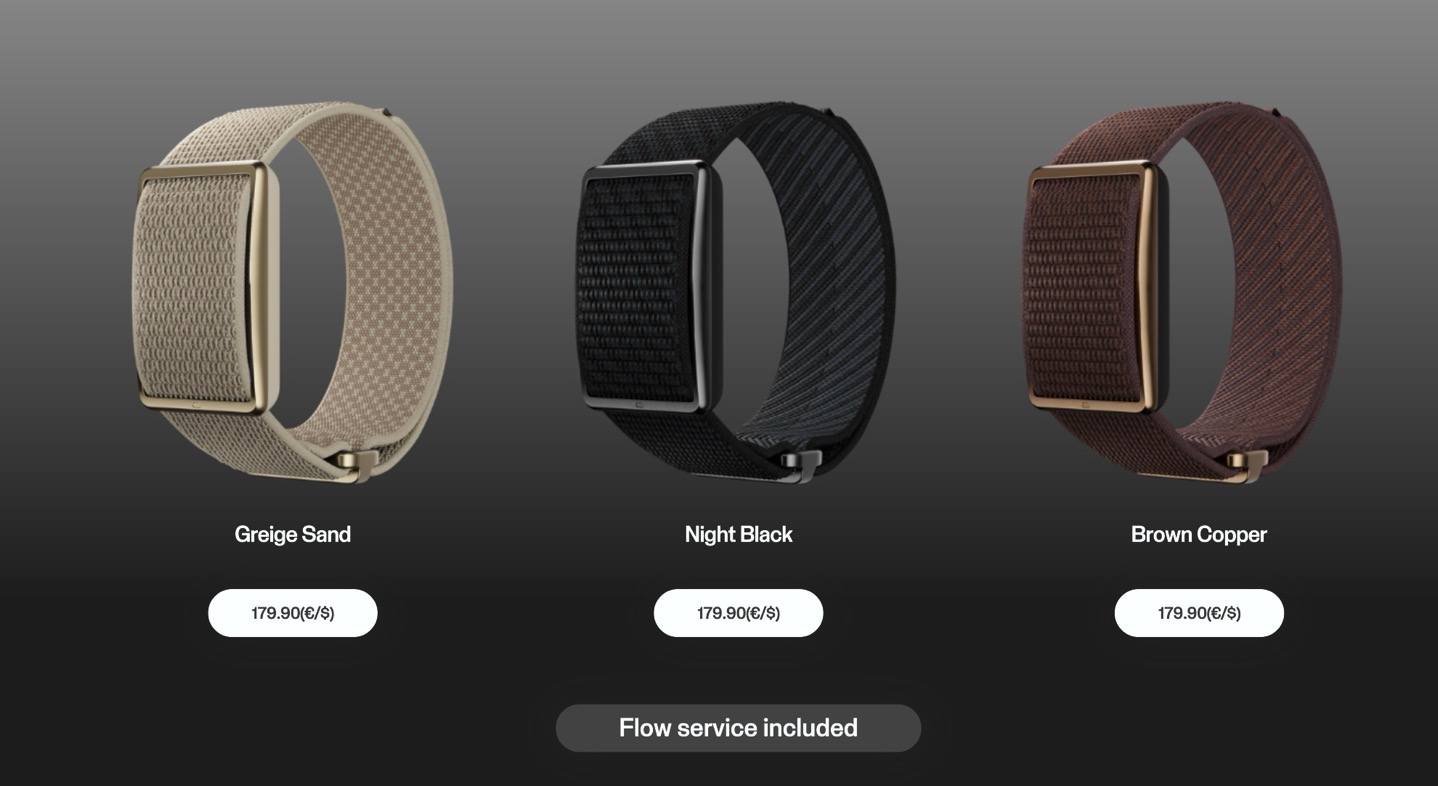
Now, some of you are more detail-oriented, and want a bunch more bits. Thus, here you go, with a giant pile of hardware specs first:
• Colors: Greige Sand, Night Black, Brown Copper
• Size: 42 x 27 x 9 mm
• Weight: 29 g total (19.5 g without wristband / 9.5 g wristband)
• Water resistance: 30 m
• Operating temperature: -10°C to +50°C
• Charging: USB-C, rechargeable battery
• Battery life: Up to 8 days standard use
• Connectivity: Bluetooth 5.1, USB-C
• Processor: 64 MHz
• Memory: 1.3MB
• Storage: 16MB
• Battery: Li-Pol 170 mAh
• Sensors: Precision Prime Optical HR, accelerometer
• Battery Replaceable: Yes
• Price: EUR 179 / GBP 149 / USD 199
Oh, and here’s the other band colors:
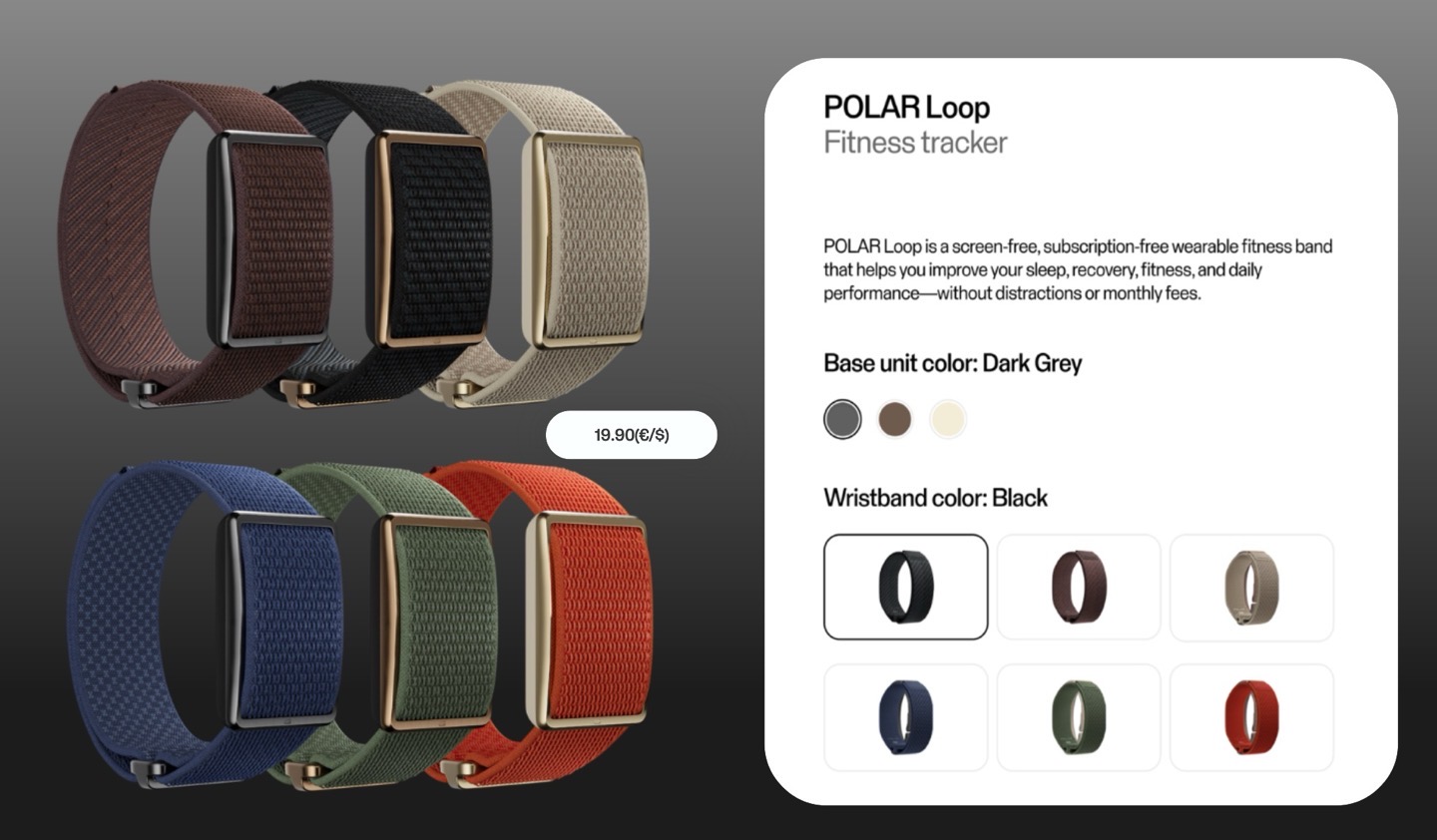
And then, when it comes to a software features standpoint, here are all the Polar software features it supports. That said, don’t get too distracted by all the bright colorful names below. I’ll distill what actually matters in a second.
– Daily: 24/7 Activity Tracking: Steps, distance, calories, active time
– Daily: Activity Benefit
– Daily: Inactivity Alerts
– Daily: Heart Rate Monitoring: Real-time, average, and Max HR
– Daily: Continuous HR Tracking throughout day
– Daily: Activity Goal: Daily targets
– Sleep: Nightly Recharge: Overnight recovery measurement
– Sleep: Sleep Plus Stages: Light, Deep, and REM sleep phase tracking
– Sleep: SleepWise: Predicts daytime alertness
– Sleep: Sleep Gate (optimal bedtime window)
– Sleep: HRV Tracking
– Sleep: ANS Tracking
– Training: Automatic training detection (or manual)
– Training: Energy Expenditure: Calories burned per session & throughout day
– Training: Training Load Pro
– Training: Tracking with Polar Flow app (including GPS details with app)
– Training: Fitness Test (with Polar Flow app)
– Training: Voice Guidance (with Polar Flow app)
– Platform: Full access to Polar Flow (web-desktop/smartphone)
– Platform: API & SDK connectivity included (e.g., to Strava, Komoot, etc…)
Now, I do want to circle back to the new Polar Flow platform/app coming soon, but let’s first talk about the Polar Loop’s functionality, then talk about the upcoming (but not yet available) Polar Flow revamp.
Day-to-Day Activity & Sleep Metrics:
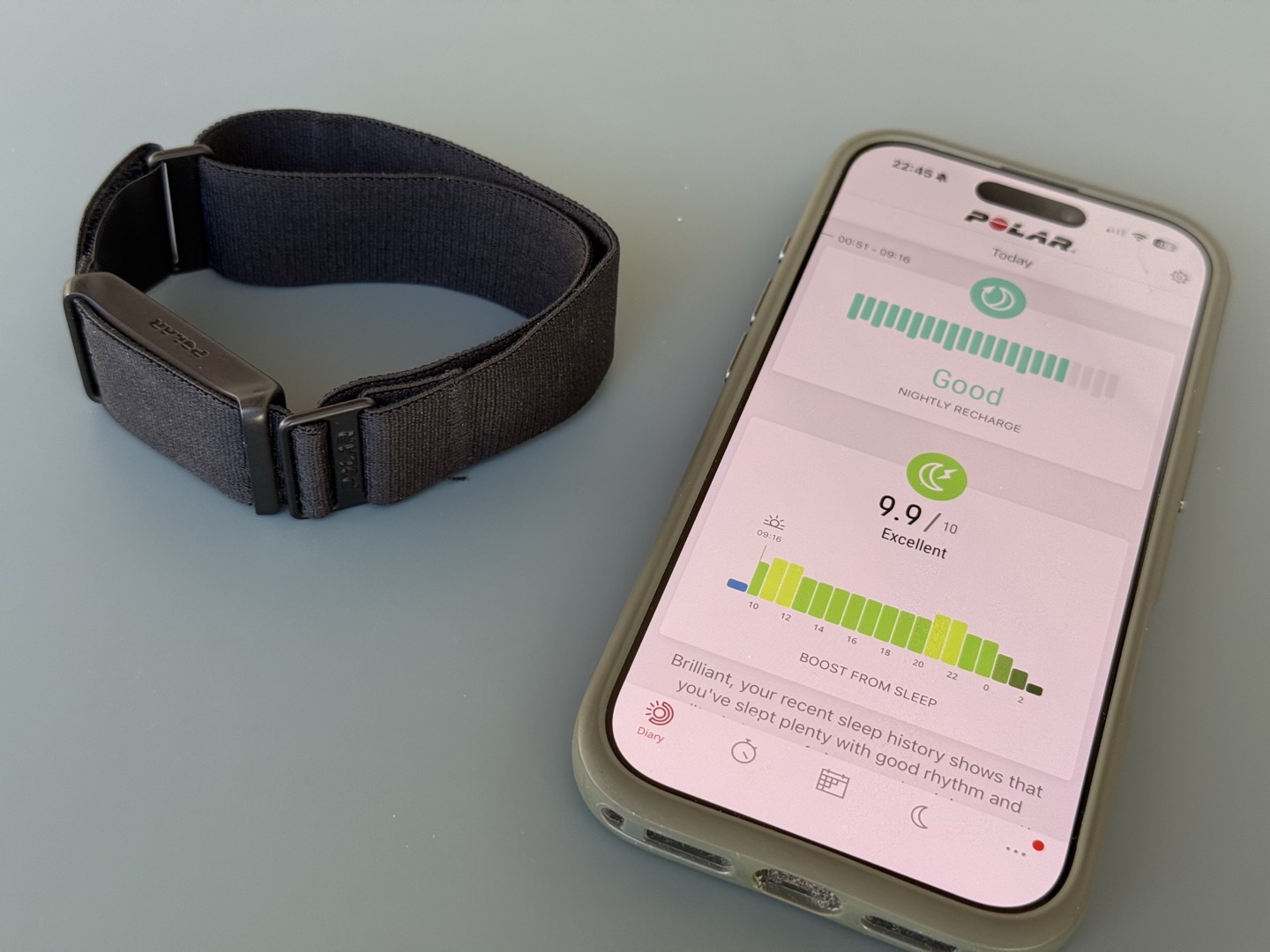
So let’s just work our way through a typical day with the band. Note that in my case I’m using the release candidate firmware and app that’ll go public with the Polar Loop. Thus, while things might change very slightly, don’t expect much to change significantly in the next week or two, given that the Polar 360 has already been in the market for nearly a year now.
In any case, waking up, you’ll see your sleep metrics within the Polar Flow app. The app is identical to the existing Polar Flow app. You can see my sleep times, sleep phases, HRV metrics, etc…
Now, to Polar’s credit, they willingly admitted the existing Polar Flow app is ‘not awesome’ (to paraphrase a long presentation section on it). Thus, what you see above is the production iOS app. Soon, an updated Android app will be available with a revamped user interface. That will bring things closer to their goal state next year. Then, later this year, the iOS app will get a similar Phase 2 revamp. Here are a couple of screenshots provided by Polar on what this will look like:
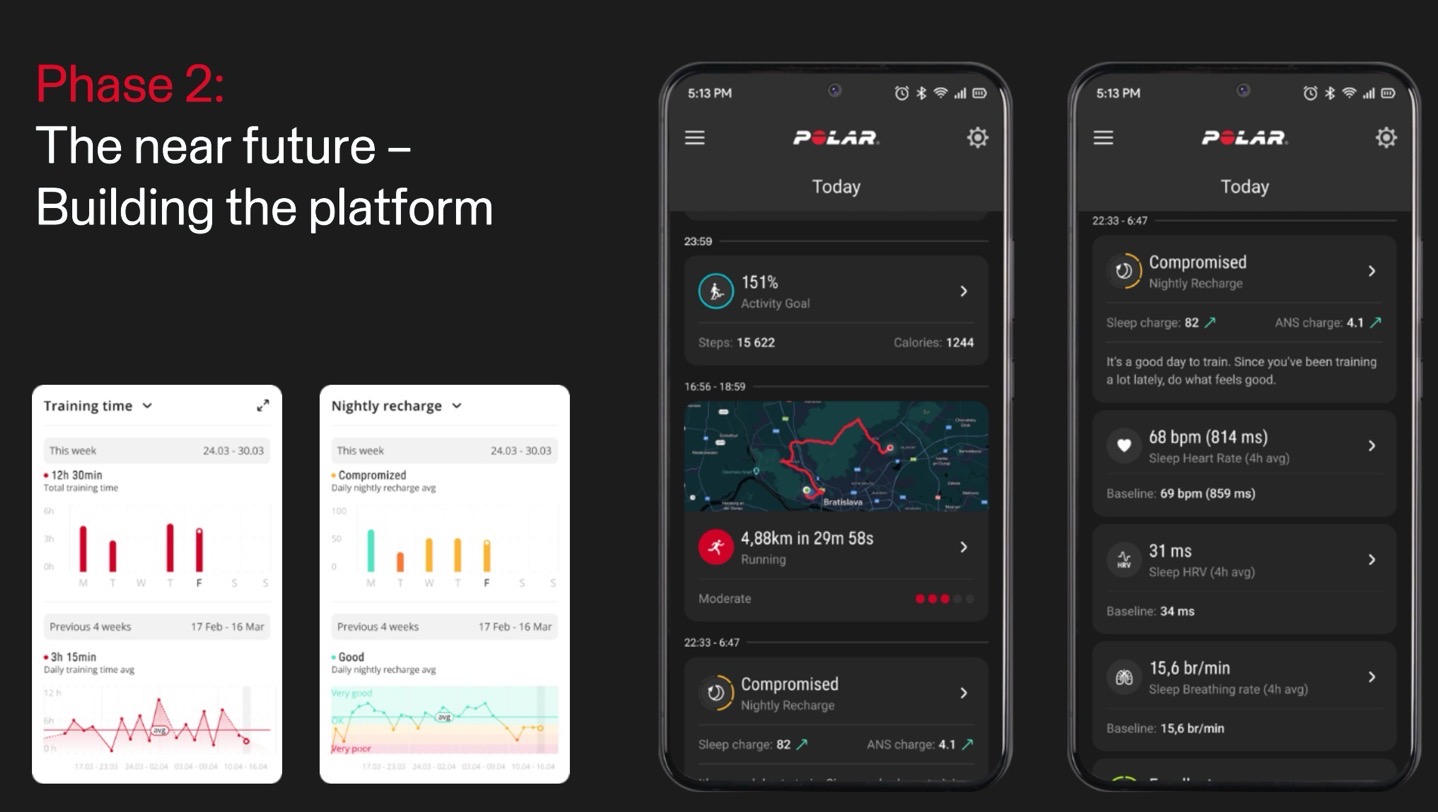
You’ll notice things like HRV status are now brought forward much more prominently, versus being buried deep in other metrics. It definitely looks a lot better than before, though it falls a bit short of the type of revamp that I think is really needed to compete with Whoop here (a company that I disagree with on lots of things, but I think their app is excellent at surfacing information in easy-to-understand ways).
As you can see above, that looks fantastic. So much better than before. But that’s really only the start.
(One important note: Everything from here on out is concept art. It’s not real…yet. And thus, probably will be different in its final form.)
After that, Polar’s going to move into Phase 3, and that looks even better. Finally!
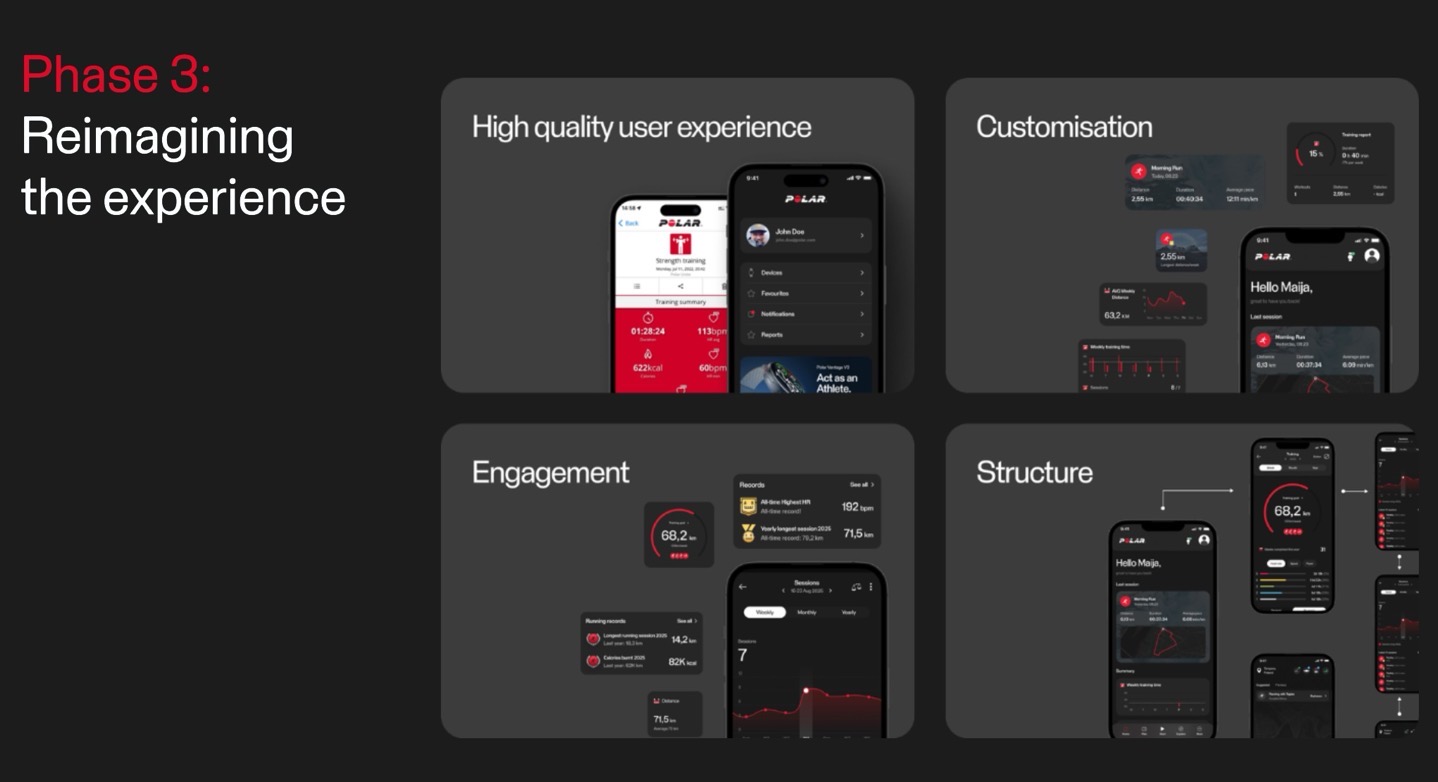
Here you can see the onboarding process:
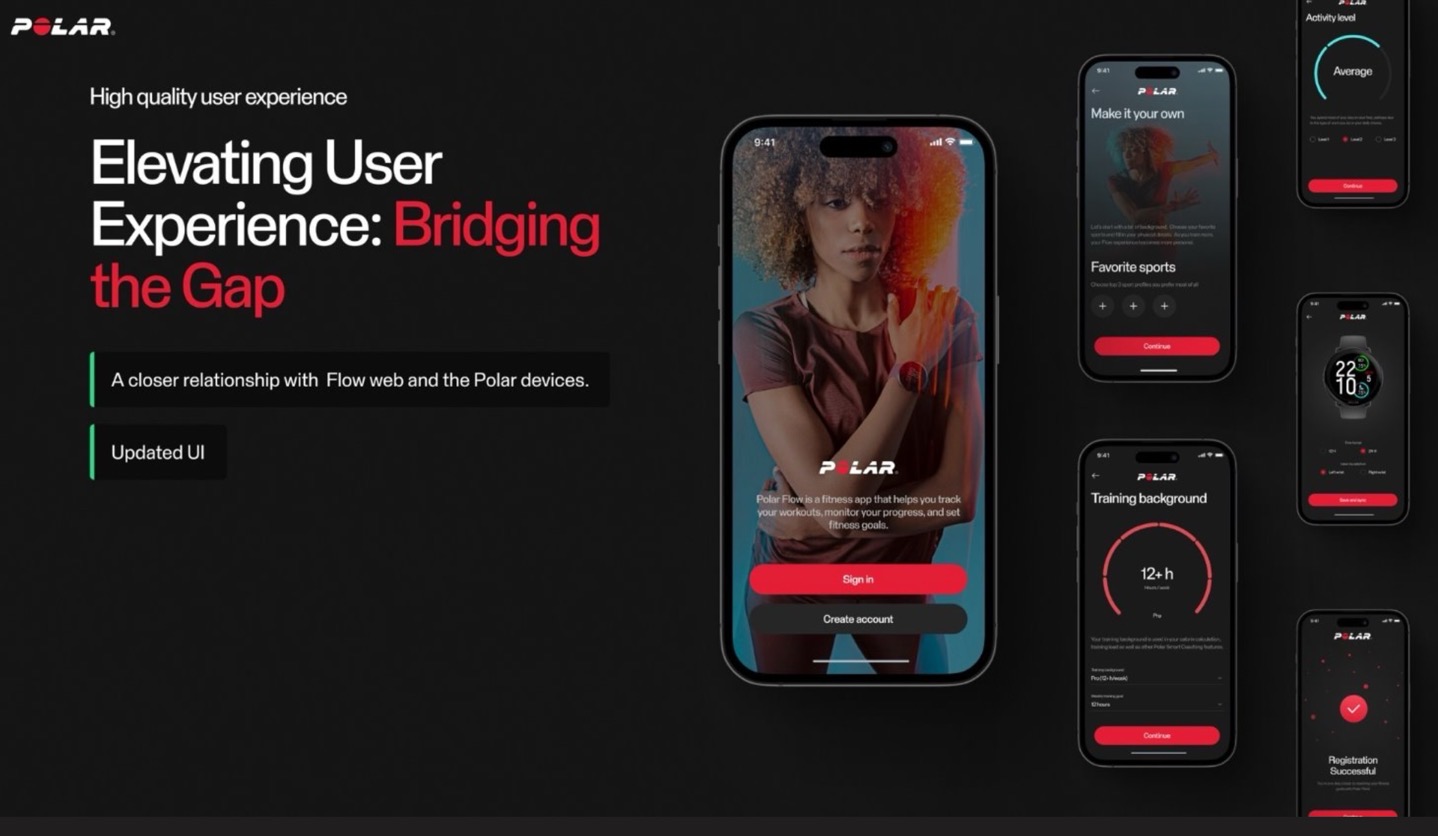
Then we’ve got the ability to customize the tiles that you want to see:
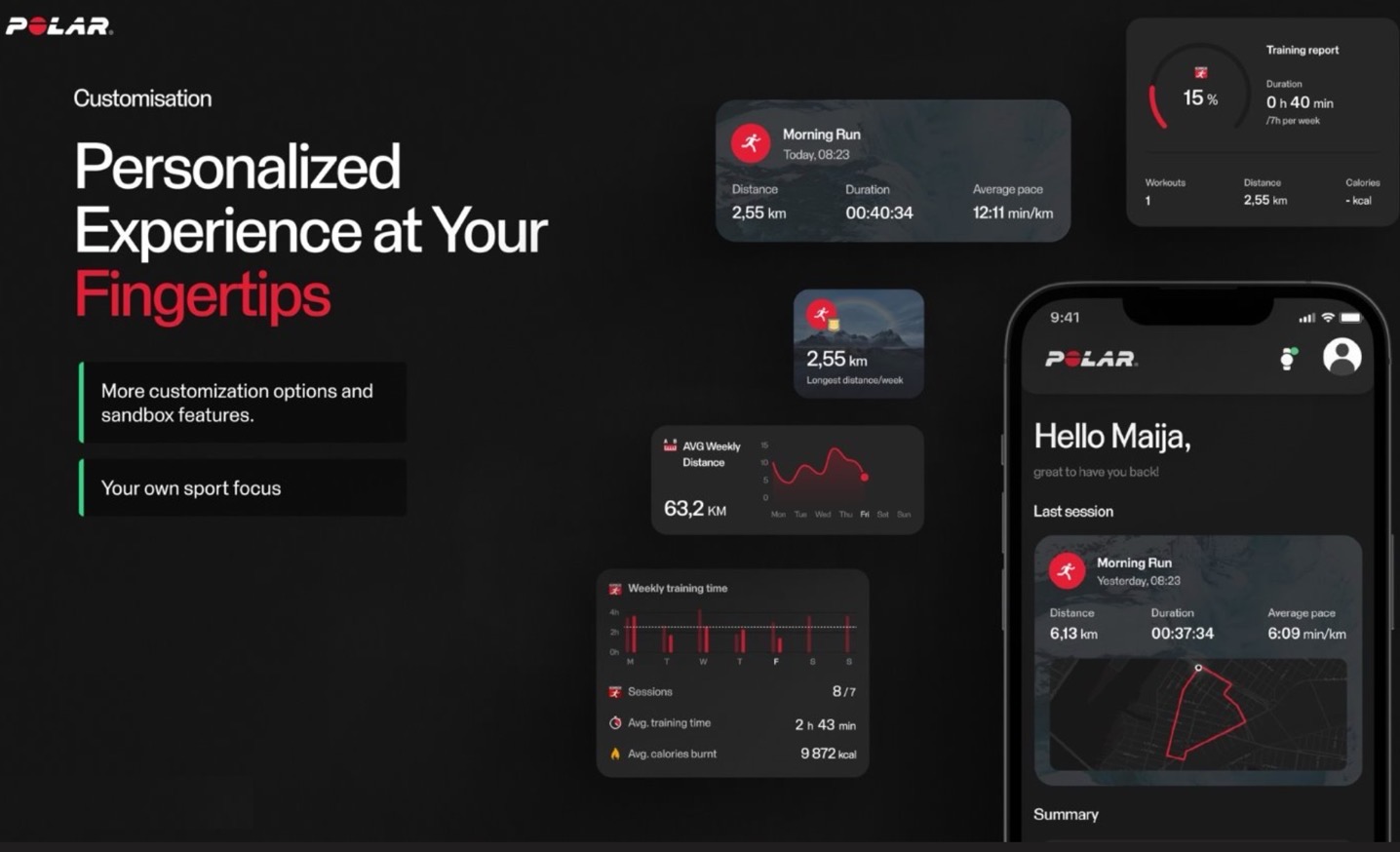
And here’s a bit more on down-the-road bits:
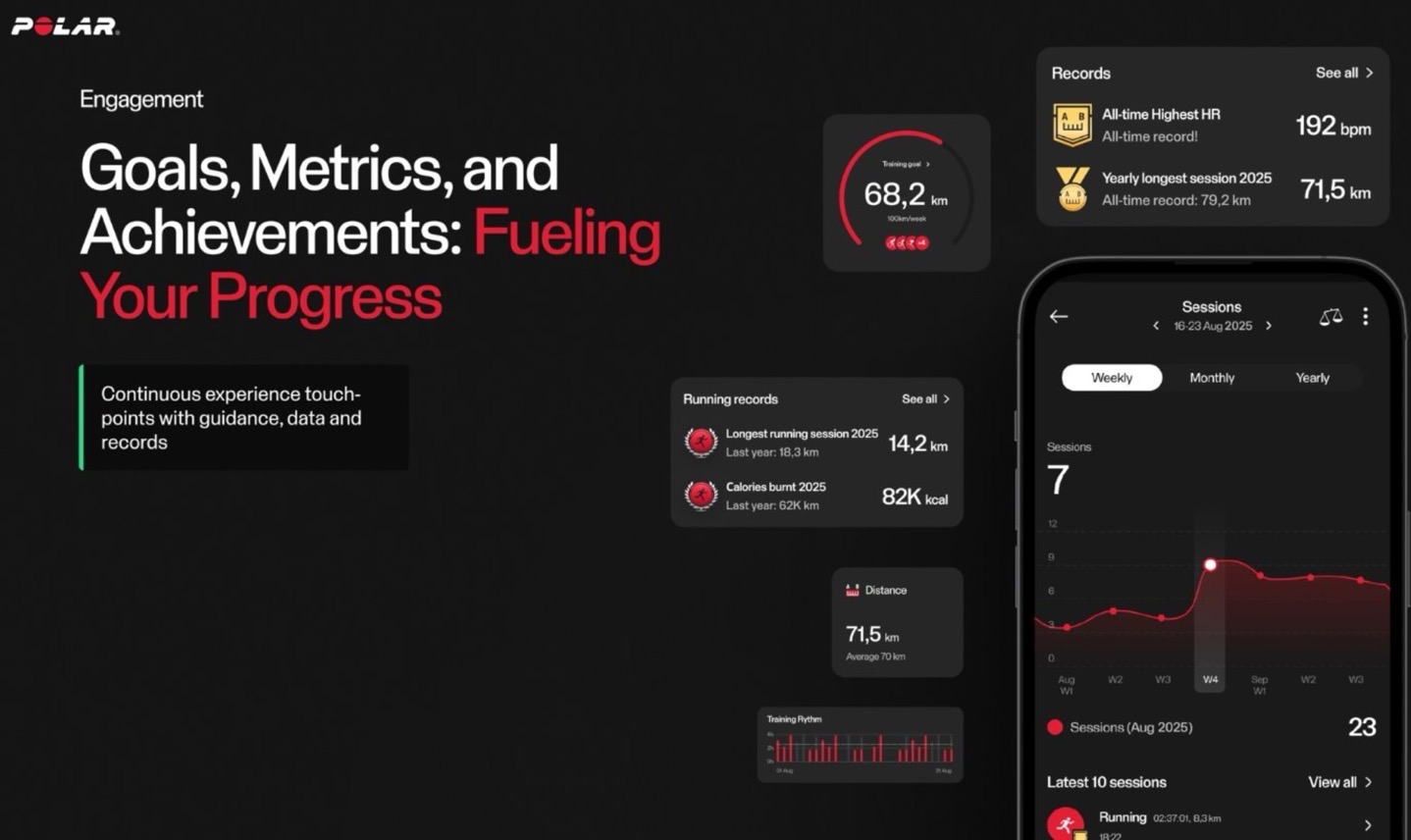
Overall, I really like the looks of this. Though when exactly we’ll see it remains to be seen.
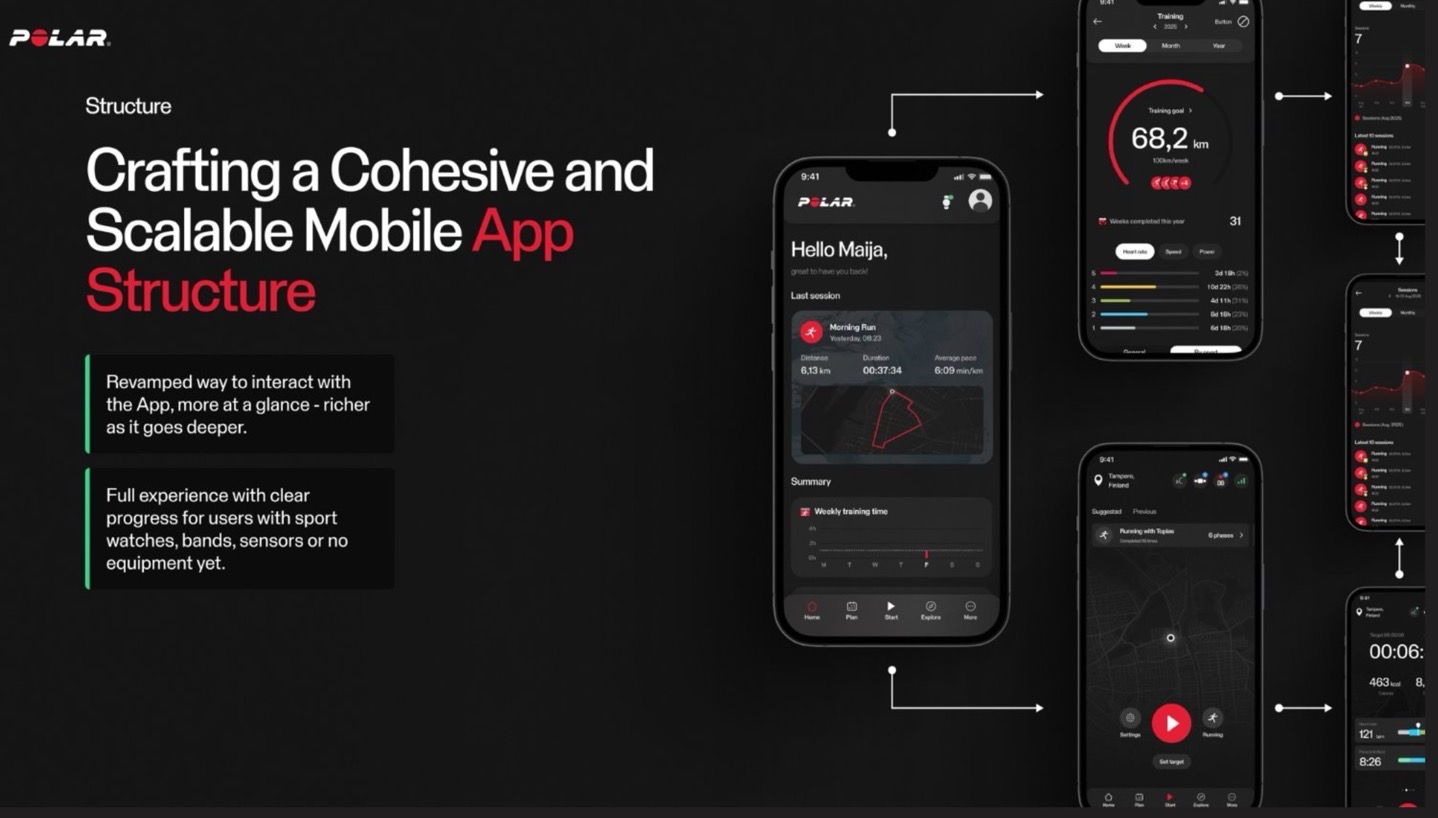
In any case, moving along back to the Polar Loop. Note that there is no wakeup alarm functionality on the Polar device. That’s still in the realm of your other devices (phone, other watch, Cuckoo clock, etc…).
Now, throughout the day, it’ll track your steps/activity, just like other Polar devices. You won’t see flights of stairs though, as it has no altimeter in there. This is an area where Polar’s UI is quite far behind virtually all their competitors (in talking about basic activity tracking). For example, I can’t tap/click on any of those metrics at the bottom to see those charted over longer periods of time, etc…
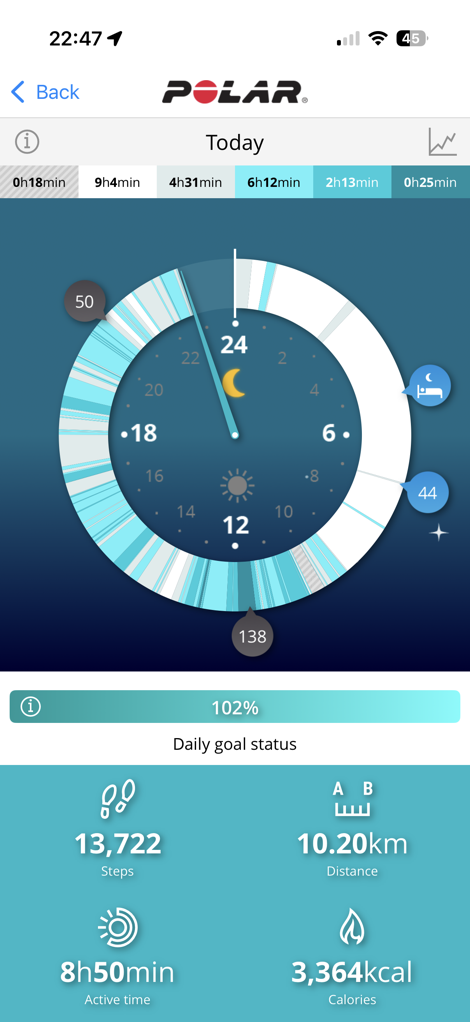

Ok, with those basics out of the way, let’s step it up.
Training & Workouts:
Next, let’s go do a workout. The Polar Loop/360 will automatically detect the act of a workout, though it will not detect what type of workout it is. Thus, all workouts detected are simply classified as ‘Other Indoor’. This is a massive difference from Whoop, which will detect whether it’s road cycling, indoor cycling, mountain biking, and a gazillion other workout types.
In Polar’s case, there’s a (very important) slide that lets you tweak the sensitivity of the workout detection algorithm. You can see it below:
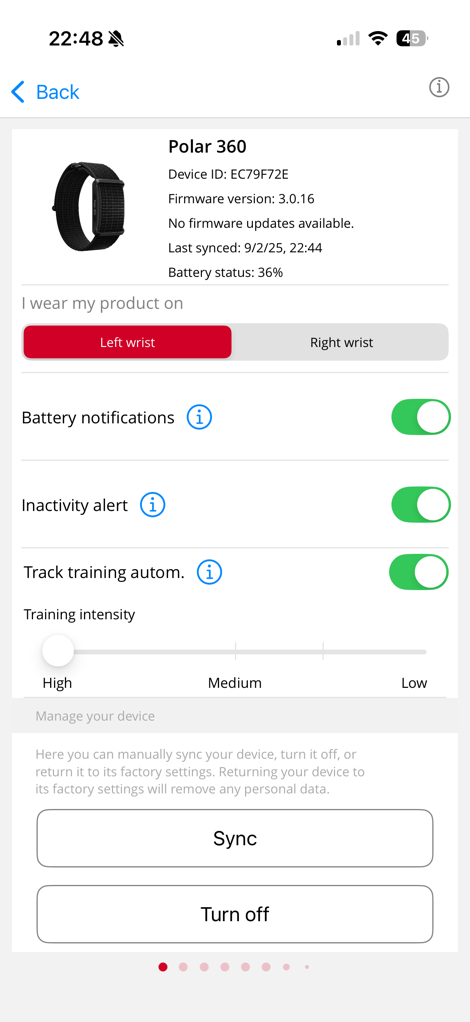
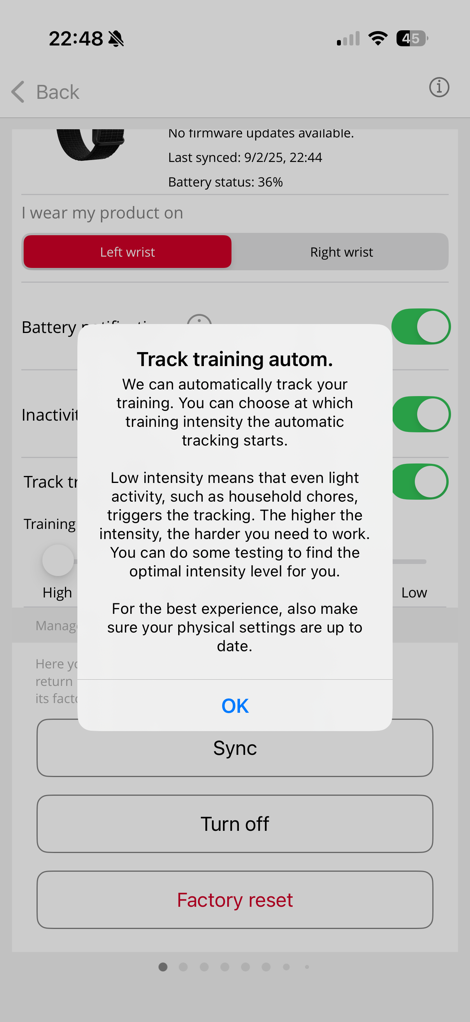
The idea behind this is to find a balance for when it triggers to start recording a workout in the background. Polar says the thresholds are roughly as follows:
High: Training is only recorded when you’re doing vigorous activities, such as running, skiing, or other high-intensity sports.
Medium (default): Activities like a brisk walk or light jog are enough to start recording.
Low: Even light activity, such as leisurely walking or doing household chores, can trigger training recording.
But wait, there’s more! I do appreciate how often Polar comes back with tons of details, as is the case here. Here’s even more details on how/when/what/why it triggers:
For a training session to be automatically recorded, it must meet certain duration and intensity requirements.
· Duration: The activity must last at least 10 minutes to be saved as a workout.
· Intensity: Your heart rate and activity need to reach and maintain certain levels:
To start tracking, your heart rate must exceed 50% of your Heart Rate Reserve (HRR) — the difference between your maximum and resting heart rates. This typically means the activity should fall within Heart Rate Zone 1 or higher.
To keep tracking, your heart rate must stay above 25% of your HRR, or alternatively, the device must detect continuous high physical activity via the accelerometer.
Your activity level must reach 6.0 METs (a measure of exercise intensity) or higher to start. Tracking stops when activity drops to 3.0 METs or below, unless your heart rate remains high enough despite low movement. This can happen, for example, when cycling, where your wrist stays almost still while holding the handlebars.
MET examples:
· MET: Sitting quietly
· 2.5 METs: Walking slowly
· 5.0 METs: Walking briskly
· 9.8 METs: Running at a 10-minute mile pace (6:00 min/km).
· 11.0 METs: Running at 7.0 mph (11 km/h, or about 5:25 min/km)
Note: These intensity values apply to the Medium training intensity setting, which is the default. The thresholds are higher for the High setting and lower for the Low setting.
Now, as much as I love detail, I also love things to ‘just effing work’. And honestly, this just doesn’t work.
In all my testing thus far at different levels, I have yet to capture a single workout correctly. They are either missing entirely, broken into vast chunks with missing pieces, started late, or ending 30-45 minutes after the workout is complete. For example, it didn’t track my 30-minute trainer ride at all today. It wasn’t super long, as I was running late to catch a flight – but, nonetheless, it was a workout.
Still, I’ll pause that line of thought to say that Polar says they may have delivered an incorrect firmware to my Polar 360, which may be resulting in my issues. They say that I should wait until the final firmware next week (Sept 10th) to re-test things.
And look, I’ll obviously do that. But at the same time, honestly, I remain pretty skeptical about this line of reasoning. With the company saying they’re going to ship in a mere 7 days, I’m kinda surprised that any near-final firmware would be meaningfully different than what comes next week. Activity detection is clearly happening, just not at all very well. In the current state, it’s unusable.
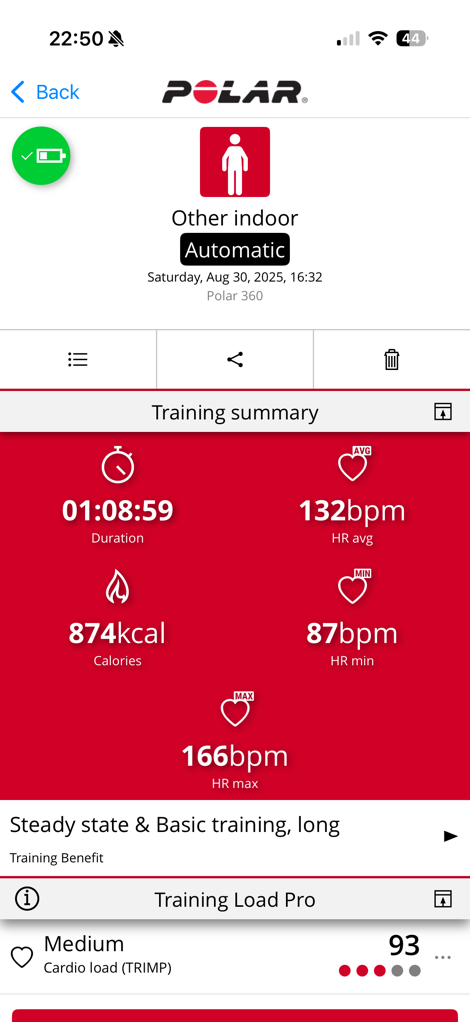

But let’s set this all aside for a second and pretend it nails the start/times exactly correct. The next challenge is that there’s no way to modify any of these sessions. So if I wanted to edit/truncate an automatically detected training/workout, I can’t do that. Inversely, if it misses the first 15-20 minutes of a session (as it does), I can’t simply extend it forward. And if it misses entire sessions (like all of my panel sessions), I can’t do that either.
This is a *massive* difference to Whoop, which not only gets virtually every single workout I have correct down to the minute, but also lets me edit them (longer/shorter/new) in the unlikely event it’s incorrect.
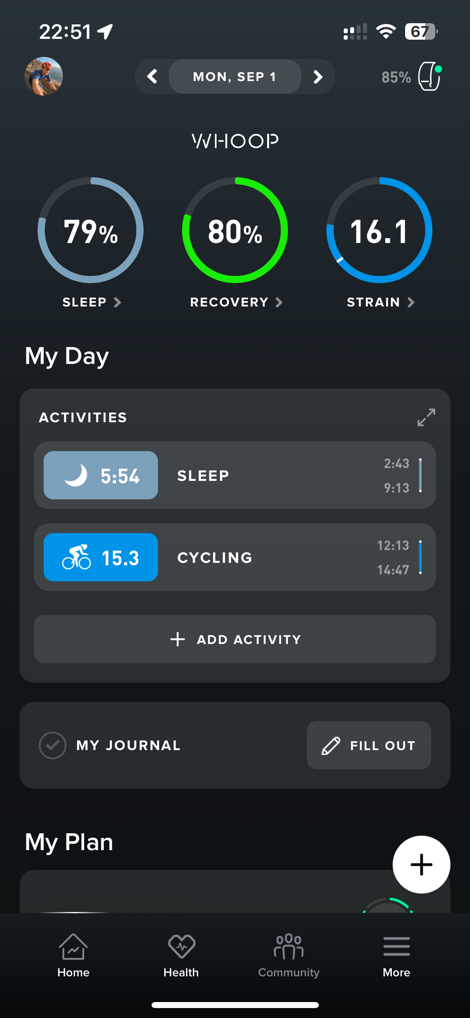
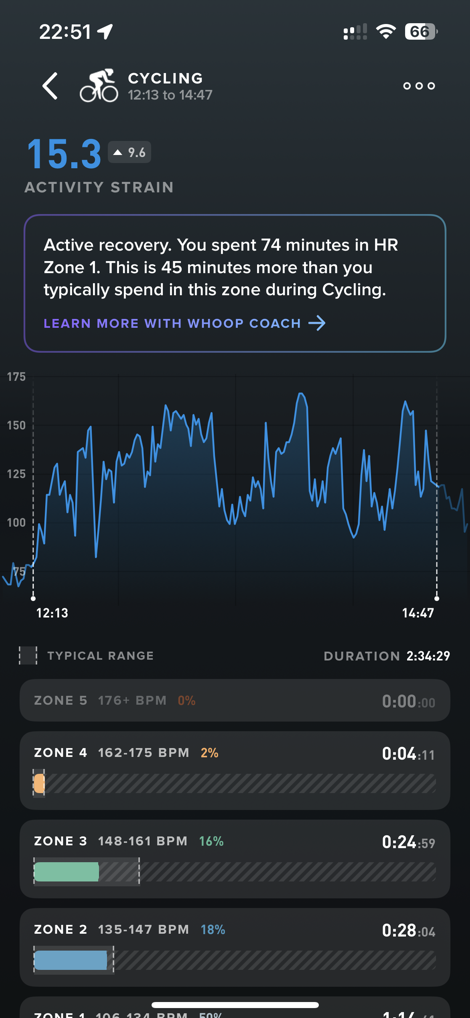
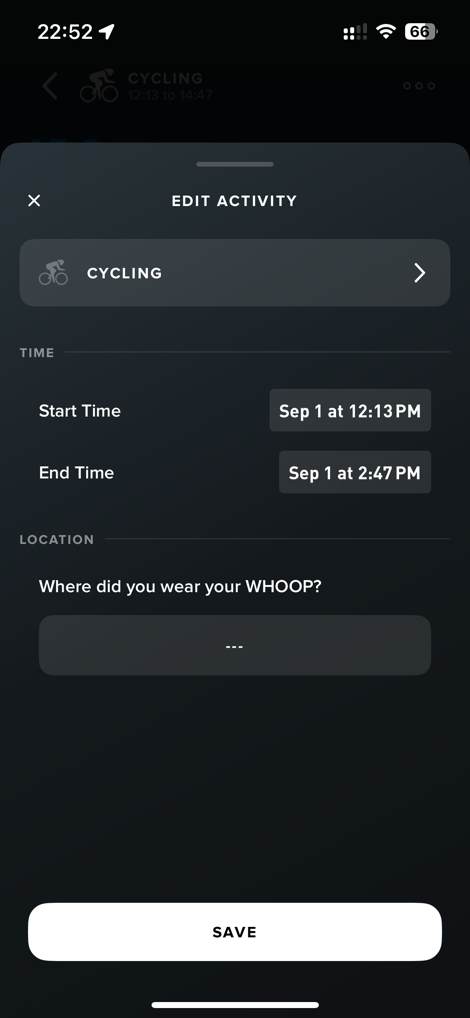
Further, in Whoop’s case, it doesn’t actually matter if it’s categorized as a ‘workout’ or not. It just looks at your heart rate throughout the day and calculates load based on that. Whereas Polar only calculates training load if the workout is detected/manually started as load. Thus, for today’s workout, where detection didn’t happen, it sees no load.
I can’t overstate how much of a difference this is. It’s literally like looking at a Boeing jetliner, and a one-person glider (no engine), and saying they’re the same. Yes, they are both airplanes, but that’s kinda where it ends. Again, to be clear – I’m absolutely going to give Polar their chance there, but knowing how it’s supposed to work, it’s already operating at a huge disadvantage to Whoop (even if it works perfectly as Polar plans).
In any event, setting that aside for the moment, here are the details you get about said workout once completed. Because it doesn’t have GPS in it, you won’t get that data by default.
You can, however, use the Polar Flow app to create a GPS workout, and then use the sensor from the Polar Loop/360’s heart rate sensor. In this scenario, you get exact control over the activity duration (start/stop times), as well as full GPS tracks that sync to platforms like Strava, TrainingPeaks, and others:

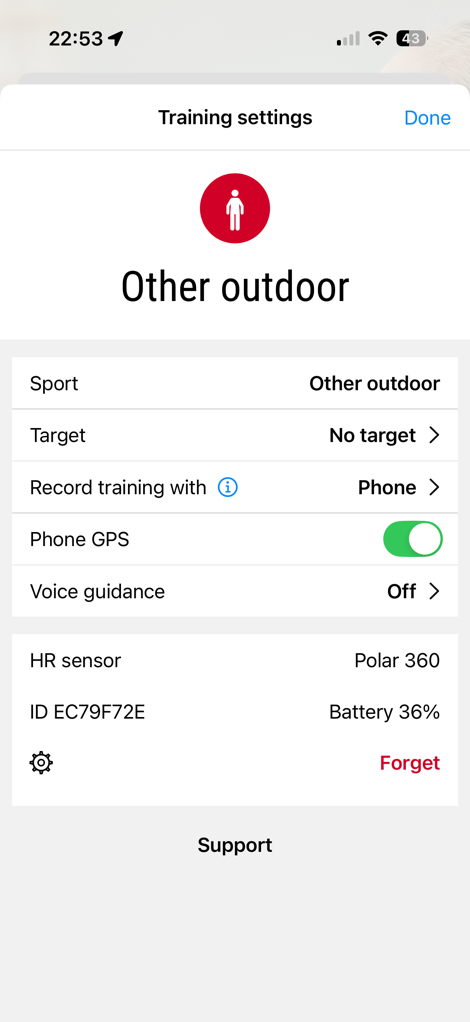
All of this then feeds into the training load bits that you have, identical to that of Polar’s other wearables, which track training load and recovery recommendations. In the case below, I had no less than 90 minutes of workouts per day every day that week, and some rides upwards of 2.5+ hours. But only the ones Polar detected will show up here (which…umm…isn’t much).
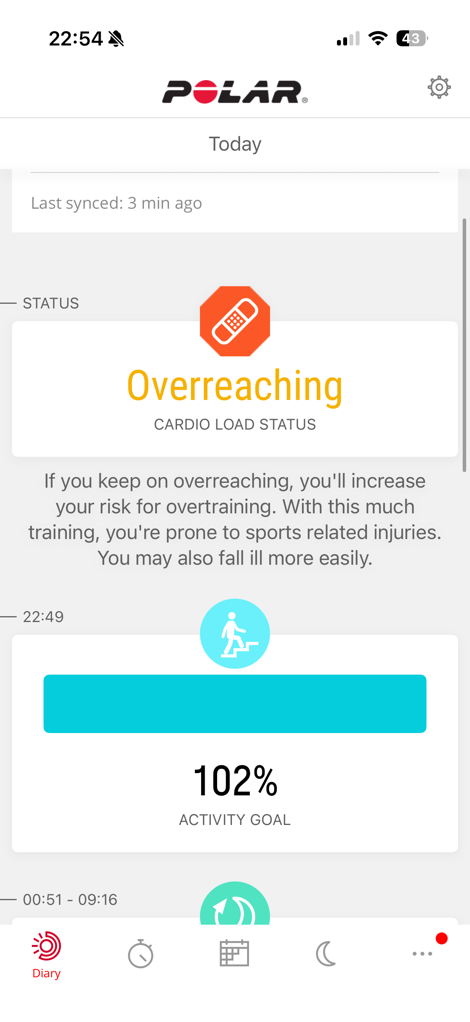


This is where Polar starts to shine. While the current Polar Flow UI is still ‘not beautiful’, I feel it does deliver more factually useful information in the training load/recovery realm than Whoop does. Whoop has their completely silly-ass 0-21 strain system for training load. Meaning that the maximum number of training load points you can ever attain in a given day is 21. I’ve covered in my past reviews how broken this is (and why every other company, scientific study, sports device, etc doesn’t use this type of tracking).
Whereas Polar uses a very logical (and widely used) system with TRIMP, which allows you to accumulate as much training load as you’d like (just like real-life human physiology). You can see those cardio load scores below:

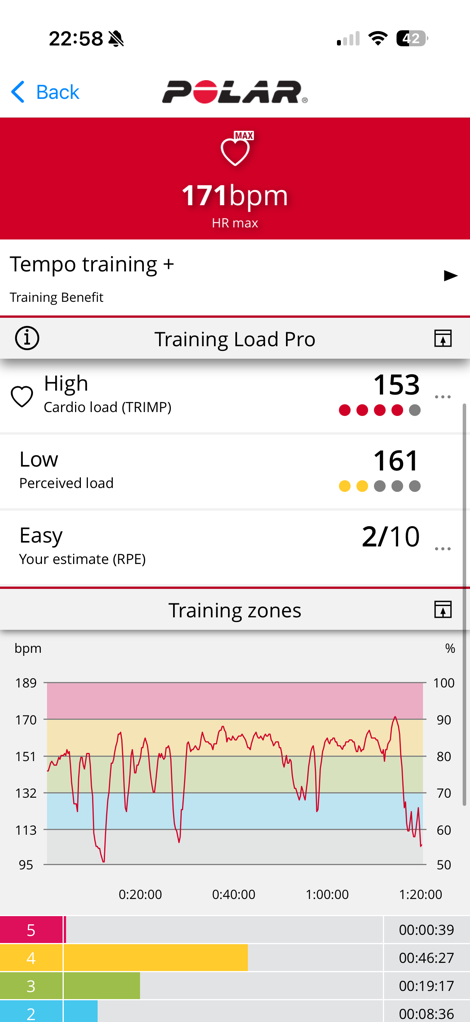
Again, all of this is exactly how it works for all other Polar wearables.
Finally, when it comes to accuracy, all of my testing with the Polar 360 (which Polar has repeatedly emphasized is exactly the same sensor, internals, etc…), shows it spot-on. Well, at least once it detects the exercise is occurring. Here’s an interval run I did (including the Whoop MG too), and all were spot-on.

And here’s another snippet from a gravel ride with a bunch of climbing (auto workout detection stopped as I started descending, ending that activity, so I’ve trimmed this to just be the relevant part). Again, Whoop MG in this set too. Note the colors have changed :

And these results match my other workouts with it as well.
Going Forward:
Someone at Polar needs to print off a giant banner (like 3 meters long), and hang it up in the office area of whatever product team owns the Polar Loop. That banner will say one thing on it: “Get Activity Detection Right”.
That includes, but is not limited to, nailing down workouts to the minute, and also getting the workout type correct. These two factors are hugely fundamental to Whoop’s success in their wearable. It makes it truly ‘wear and forget’, versus the Polar Loop/360 & AmazFit Helio requiring a fair bit more phone app updating interaction in order to get the same type of data.
Which doesn’t mean that Polar is on the wrong track. There’s a lot of goodness in the Polar ecosystem, from better workout tracing and cardio load tracking, to better recovery metrics, to generally more accurate optical HR sensors, to the fact that it doesn’t have a subscription. That piece alone is huge. But we also can’t let it overshadow the product itself (as some people have on the Amazfit Helio band). Just because it’s positioned as a competitor, doesn’t make it a true replacement. At least, not yet today.
Still, I’m looking forward to testing it out, and seeing where it does fit, and how fast Polar can iterate on it.
With that – thanks for reading!
FOUND THIS POST USEFUL? SUPPORT THE SITE!
Hopefully, you found this post useful. The website is really a labor of love, so please consider becoming a DC RAINMAKER Supporter. This gets you an ad-free experience, and access to our (mostly) bi-monthly behind-the-scenes video series of “Shed Talkin’”.
Support DCRainMaker - Shop on Amazon
Otherwise, perhaps consider using the below link if shopping on Amazon. As an Amazon Associate, I earn from qualifying purchases. It doesn’t cost you anything extra, but your purchases help support this website a lot. It could simply be buying toilet paper, or this pizza oven we use and love.

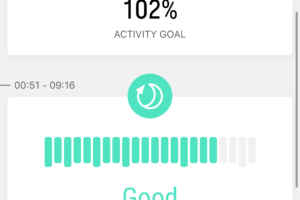
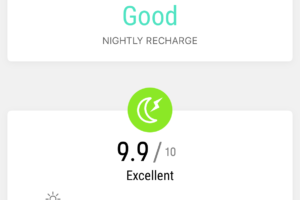
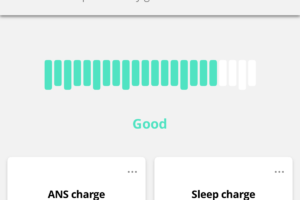
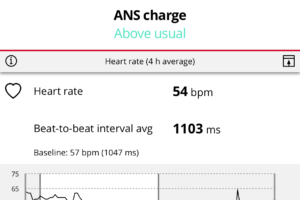

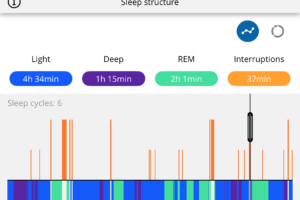

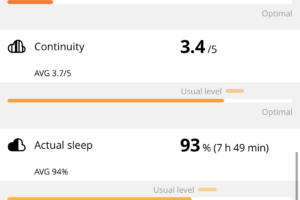


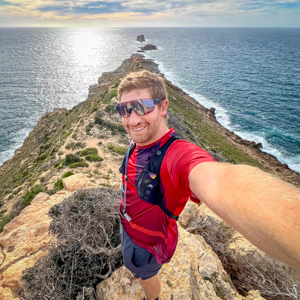







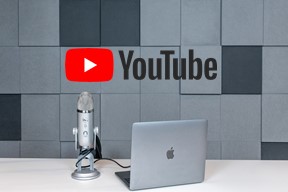

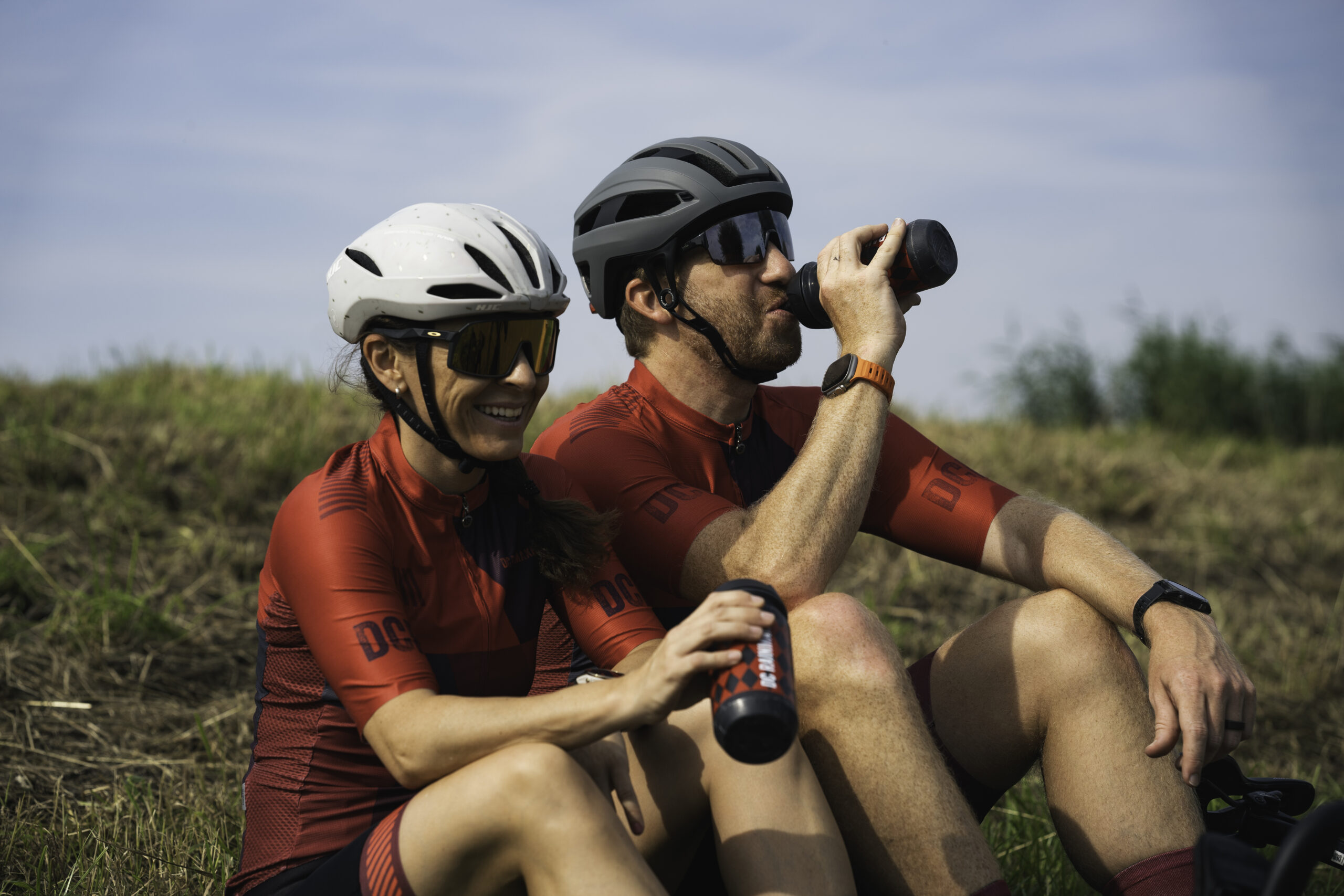

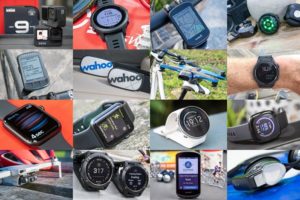

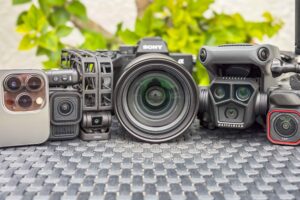

“xxxGallerySC” placeholder probably isn’t meant to be there…
Thanks!
Hi Ray,
The new app looks great (finally!).
Any release date, at least cca for the new Android app?
Would this be any useful if you already have a Polar watch?
you could turn off the watch for sleep tracking but everything else would be recorded twice
Is this going to feed Apple Health so that can be used frictionless at night instead of Apple Watch?
I continue to resist any type of whoop like wearable. I’m not sure they provide anything meaningful that I cannot get from an actual watch with a screen. Obviously a large chunk of folks see the value and are buying them. Maybe I’m just an old man who likes his screen, GPS, relevant workout out functionality, and recovery features in one package.
I’m with you on that thought Craig, everything is there with my existing Apple Watch Ultra! There are loads of apps out there trying to make the stats “look like” Whoop with strain etc but I think HRV, sleep and training data is enough to work it out yourself!
IMHO it’s not supposed to be your single device, it’s supposed to complement the devices you already have. For example, you might wear the band inconspicuously throughout the day (to collect ambient data / recovery data etc) and only put on the watch for the actual exercise when you would benefit from a display. For some activities you might even keep the band instead of a watch – for example when I’m cycling, I typically have a bike computer, so there’s no need to wear a watch outside of gathering the ambient data. Same goes for hiking – I prefer handhelds for their screen size and longer battery life, but would still like to get HR-related data.
How about not wanting to spend what, $800 on an AW Ultra, have to charge it every day / every other day, have all the distractions that come with a screen and so much functionality? Some people want all that and are prepared to pay for it, others don’t.
The problem just is that an Apple Watch is Not Tracking HRV data continously over the day, as any other sports watch on the market does. So actually, HRV on an Apple Watch doesn‘t offer any really value as it is just a „casual snapshot“, not anything useful for actual analysis. As long as Apple doesn‘t fix this (and it‘s been that way for years) they will never be able to compete with Garmin, Coros, Suunto, Polar and others. It‘s just a smartwatch trying to emulate (but not seriously adapting) training analysis.
+1
Other question, is’t possible to wear the Loop at your upper arm?
Also curious about upper arm wear. Thanks for the review!
I think the point is that I do not want to wear a screen and have another distraction in life. I would rather wear my automatic watches.
Wearing a Apple Watch type device for Health monitoring + an automatic match is a bit mental. So, its either one of those. With a Whoop/Polar Loop type device I enjoy wearing my automatics, avoid unnecessary screen distraction while monitoring my health metrics.
Thanks for your Thoughts.
Will it broadcast to other de ices like Helio Strap?
Same question. I love having my whoop broadcast, so I can simply hop on a ride and have one less thing to think about
It doesn’t broadcast, it only has 1 Bluetooth channel.
thanks Rui. Ray always misses this detail in the reviews.
For me, no broadcast HR, no buy. So, very important.
Extending Antonio’s question above, do you know what if any information is read from and written to Apple Health?
Any sign of a band usable on the upper arm?
Amazing Rayman!
Just got the email from Polar and checking the stuff. Ok so same as 360 sensor etc.
Been following you and QS for a while now and checking comparisons.
Most accurate data esp cycling, weight lifting as well as HRV, blood oxygen and then sleep score plus ev. apnea warnings since I snore a bit “I’ve heard” ;)
BUT! Can this one be set to like “offline” and let it track in airplane kind of mode and then sync later?
I don’t feel good having like BT on all the day every day and during sleep.
All the best
It seems like, they talk about 4 weeks onboard memory for later sync. But I don’t think this sensor measures blood oxygen like you want, it’s an older generation.
“there is no wakeup alarm functionality on the Polar device. That’s still in the realm of your other devices” – that seems an odd statement for a sleep tracker, isn’t a use case waking you up once you’ve had enough? Does that mean the hardware has no vibration alert at all, or just that they haven’t implemented the function in software yet?
link to support.polar.com
It’ll come in version 2 ! Oh wait… :D
I like the idea of a ‘wake up now, you’re good’ feature which you can toggle on vs off – have always felt like Polar don’t push these features from a purist perspective of ‘the science isn’t that robust’ e.g. they ask you for your optimal sleep time / wake up time – whereas they could suggest a wake-up time based on body temperature and hear-rate over time – or tell you that your waking time is awful given your sleeping time to prompt you to go to bed earlier – but they pride themselves on having a strong scientific rationale and associated method – and maybe there isn’t either in this case?
Any chance of adding some comments on HR accuracy (eg, vs Verity Sense and H10)? Would be interested to know whether this is now the highest-fidelity subscription-free 24/7 HR tracker on the market. (Using something like the Verity Sense or H10 for 24/7 tracking is very cumbersome.)
What if you have a Polar device already that you only want wear for workouts. Do you remove the loop? Do you use the Loops HR, or will Flow know to identify a duplicate and not double your load etc?
Good question! I would like to know that as well.
I frequently use two polar devices and simply delete one of the workouts in polar flow.
Unbelievable!
They have finally realized that their app is not good and looks old-fashioned. :D
Finally a new Flow app is coming.
One can only hope that they will bring an app update beforehand to edit the training sessions afterwards.
With good app updates, the Loop could become a real Whoop killer,
even if Polar hide certain metrics and AI analyses etc. behind their subscription, which is worlds cheaper than Whoop’s subscription.
Ray, given:
“Polar slightly expanded the internal battery to get an additional 1-2 days of battery life compared to the Polar 360”
and
“Battery Replaceable: Yes”
Does this mean that us existing 360 users can replace the battery with a Loop battery, to get the additional battery life and effectively upgrade ourselves to having a Loop?
Hi everybody,
does it make any sense to wear also the Vantage and at night keep the loop only? Will it offer better data, more data or will cause a “conflict” of data? Or it will delete the one sourse of data? (Which?) Or just skip it and keep only the watch?
And why do i have to use an app-workout to have gps data? Why not start a watch-workout and take gps data from my watch (i would say any watch but at least polar watches should work). It’s more convenient to leave phone at home. And an idea:if polar makes the loop and a watch work together how many compined metrics could we have?
Great review, thank you. I currently wear a ring 24/7, and an old Garmin Fenix watch to track workouts. I use the ring to monitor changes in my day and sleep hrv to get an idea of my recovery over time. But that is mostly guesswork as manufacturers don’t really share their data over and above heart rates… so my question is, if I went for a Polar Loop, and a newer Polar watch for exercise only, do you think I could enjoy Polar’s full exercise and post exercise recovery metrics?
Great review, thank you. I currently wear a ring 24/7, and an old Garmin Fenix watch to track workouts. I use the ring to monitor changes in my day and sleep hrv to get an idea of my recovery over time. But that is mostly guesswork as manufacturers don’t really share their data over and above heart rates… so my question is, if I went for a Polar Loop, and a newer Polar watch for exercise only, do you think I could enjoy Polar’s full exercise and post exercise recovery metrics?
EDIT- looking at other comments, this appears to be a common question – using a loop and a watch to complement each other. Would be super if you could expand on that in the main article!!!!
New Apple Watch is almost out. Unclear to me why anyone would need anything else since besides health tracking it does so much more. Close enough for most people I think.
Again, how about not wanting to spend what, $400 on an AW, $800 on an AW Ultra, have to charge it every day / every other day, have all the distractions that come with a screen and so much functionality? Some people want all that and are prepared to pay for it, others just want something relatively inexpensive and discreet they have to charge once every week or even two weeks.
The Apple Watch hardware is already fully developed.
But the Ultra is too overpriced.
And you can’t change the battery yourself.
The biggest problem is the software:
watchOS.
Something like Google’s Fitbit Healtch Coach is missing.
Plus the battery life of the AW.
If I could choose freely as an iPhone user (hopefully soon in the EU!) then I would currently prefer a Pixel Watch 4.
The Apple Watch has no real continuous HRV measurement, it doesn‘t offer any analysis of training load, recovery time, sleep quality .. and that‘s just the start. The Apple Watch might excel as a smartwatch, but it honestly sucks as a sports watch, in case you expect anything more that tracking your walks or the occasional run with minimal data. If you have ever used a Garmin, Suunto, Coros or Polar watch, you will see that almost all sports functionality that is a given for these brands just doesn‘t exist on an Apple Watch.
An Apple Watch isn’t of much use if one doesn’t own an iPhone.
Thanks for the great review!
I am recording all my workouts with the Polar Beat app on iPhone + the Polar H10 heart rate strap. It auto syncs with the Flow app and so on, and I am pretty happy, but what I lack is recording of activity data like steps, sleep, recovery.
Say I add a Polar Loop to the sensor setup, so that we now have a Polar H10 and a Polar Loop.
Can I use the Polar Loop with the Polar Beat app?
How does it handle dual recording (H10 with Beat + Loop auto recording on Flow)?
Can I connect the H10 to the Loop for workouts, like with a watch?
Hi, can i use it with my garmin watch? Or what is the best arm band to used in the bike run garmin watch? Thanks!
This is not a HR band that you connect to a watch, but a sort of replacement, meaning you don’t use this and a watch at the same time. What you are looking is something like a Coros HR monitor or a Polar Verity.
Actually, in my case I do need to wear this on my arm and also wear a watch. I have medical issues that require me to monitor my HR while running hard uphill, so I need a watch for that, but that’s the only time I need a watch. For working out and more casual running a band on my arm is all I need and want. I frequently use a Polar Verity Sense, but it’s not something I can wear 24/7. I really hope we can get bicep bands for the Loop.
Even with the major challenges you listed, I’m going to give this a try. It feels like it has the potential to be a major upgrade over my Vivosmart 5 and I’m just not interested in a whoop subscription again.
I’m going that eventually a bicep option will be available as well but this works for now. I feel confident that polar will fix the issues you see with workouts because they’re pretty significant.
How accurate is the HRV data? I’m looking for a wearable that captures this along with resting HR and total daily activity (Kj burn) w/o a subscription.
I use an Ultrahuman ring to monitor hrv and sleep 24/7. No subscription, but can’t comment on accuracy. It has activity detection but not very accurate and Instead I use a sports watch and chest strap to get my HR zone and other metrics during exercise.
You can also try Ringconn, which has no subscription.
I would see all of this integrated in chest strap. For me, wearing this on wrist doesnt make sense at all. Its just causing issues during exercises… as chest strap it could also be heavier and have GPS + better battery…
This a product for all-day tracking of body functions, especially sleep. The focus is not on reliable HR tracking during activities. There are hundreds of chest straps on the market providing just that already. I can hardly Imagine wearing a chest strap during sleep. I guess, you haven‘t really grasped what this product is meant for.
Thank you for this !
I don’t quite understand the price without which is almost, or is, the price of a watch, like maybe the pacer watch.
So no screen, ok, I get it, and no GPS, and almost the same price. There I don’t really understand.
I have got the pacer pro, and I guess I have the same infos (recovery tracking…) and maybe they have it with the pacer as well. So, I don’t understand the price. Even I do understand that it might be good not to have a watch. In the end, I kind of would like that as in real life, I never wear the watch. Though I need the info during hiking… But keeping such a band at night must be more comfy than the watch, which I don’t keep cause it bothers me…
I switch from an old garmin forunner 225 (yeah quite old) to pacer pro a year ago, there was a really nice discount for the pro like 40%. I really like the flow app. Actually I like it better than garmin connect.
The only issue for me is the optical sensor, at the beginning I found it pretty accurate. And then I don’t whether it’s because of winter or what, ultimately there some really weird drifts like big drops of the heart rate and it stay low and it should not, or sometimes it bumps, and as well, it should not.
Any comment on that ? reset the watch? Let’s say that it works well at rest… but then those bumps are weird.
I have got a chest strap anyway. But sometimes, you just have the watch, right ?
Thanks again for the review.
Cheers !
Does the strap fit on the bicep?
Can you use the strap as a HR monitor? for example connect it as a bluetooth HR device to a watch, phone or exercise machine?
Did you see anything for turning Bluetooth off on the band……through the app?
How would you turn it back on? The phone is connected via BT, so… if you turn it off via the app, there is no longer a connection to the phone.
Hi Ray,
I’m looking for your opinion. I had an ablation for AFIB in 2022. No AFIB since but my parasympathetic/autonomous heart control has become very sensitive. Checking my resting HR pre Ablation was simple; 1st am lie down, breathe calmly, look at HR = rock steady HR.
Post ablation using this method gives garbage results. I can see a high HR but feel great on a ride or see a low HR and feel crappy on a ride.
I’m thinking HRV or whatever metric WHOOP/Polar use is the way to go.
Having done a bit of calibration work I’m thinking that more data is a good thing, like sleeping while monitoring.
I use a Frontier X to warn of AFIB and it tracking rapid HR rise far more accurately than A. Garmin 830/1030+-dual HRM combo. B. Garmin 830/1030+ / Frontier X combo using screen as HR indicator. The Frontier X has limit setting, eg. 1 buzz = 130bpm, dble buzz = 140.
I can’t sleep with a chest strap, stomach sleeper. I tried a Polar Verity Sense but no HRV data that is valid. (Thanks)
I only want something to monitor sleep, I may morph into wearing it 24/7.
I ordered a WHOOP and was strongly put off by their whole approach from personal info. capture/subscription that I sent it back before using it.
What would you recommend?
cheers and yes count me as a DC Rainmaker fan, renewing sub.
Several options for you, which might be good to try before buying hardware that might not work for you. You can do whole night HRV or a single morning reading, those correlate pretty well according to studies. It doesn’t even need to be a super long measurement, even as low as 1 minute will wield usable results.
I would start with a single morning reading, using an app, something like HRV4Training or Welltory. They work even if you don’t have any sensor, using the camera in your phone, a method also validated. This way you can see if your condition doesn’t prevent you from collecting useful HRV data. Afterwards you can keep using this method or change to an all night reading. As for devices comfortable to wear all night you can consider Amazfit Helio (but you returned Whoop, so from a privacy point this is probably even worse), maybe a ring like Oura or Ultrahuman, or even just a regular smartwatch like the Pixel (hear great things about HRV accuracy with model 3 and 4).
It’s been a minute, but I was a previous WHOOP subscriber. It failed to detect two SVTs (different from Afib, but similar w/r/t change in HR) I had while cycling. Both were picked up by my Apple Watch and a Garmin chest strap I was wearing at the time. I contacted WHOOP and they basically told me that the SVTs were anomalies that their software was programmed to disregard. What??? It’s possible that I misunderstood their explanation, but the fact remains that it didn’t detect two occasions in which my HR > 200bpm for very long periods of time. After the second time, I canceled the subscription. TBH, I found that WHOOP’s algorithm was often not predictive of overall “wellbeing”. I figured if I was going to rely on “how do I feel?”, I didn’t need to pay for their subscription. YMMV
Hi Rui,
Thanks for the well thought out answer. I kick those ideas around.
cheers
Hey,
SVT….an anomaly??? Glad I went with my gut feeling on them and returned it.
cheers
Just as a side note, I understand why they might consider SVT an anomaly (of the heart), but sensor is “blind” so it should correctly collect the heartbeats even if someone goes over 200 bpm for a while. There are healthy young people that reach those numbers, so it shouldn’t be an excuse.
Anecdotally has a friend that noticed a SVT because both his Garmin HRM and Whoop recorded HR over 200 bpm during a race for about half an hour. While the Garmin data seemed much more “stable” (HR jumped about 40 bpm all of the sudden and stayed there more or less “stable” till the end of the race), Whoop was a bit more bumping around, but still over 200 during that time.
So I would say any HR sensor worth its name should pick this up. People might confuse it as a cadence lock since it’s a very rare event, but the data should be there. YMMV
Look here – the page is in german. But I’m pretty sure there is an english one too.
link to support.polar.com
Hi Ray,
You mentioned that the Polar Loop contains the same sensors as the Polar 360, but for the Polar 360, it is mentioned that Skin T is measured, which is not the case for the Polar Loop. What is the explanation for this?
Many thanks and with kind regards,
You write that Polar has confirmed that it has the same internal components as the 360. According to Polar’s website, the 360 also measures nighttime skin temperature. I can’t find any information about this for the Loop. Is this value also measured?
This was a feature I was hoping for as well. If you go to the Polar site and compare the Loop to a device that HAS skin temperature as a feature is shows that the Loop does not – link to polar.com 4th option down under sensors. Disappointing since the 360 lists skin temperature measurement as a feature and more odd since the images of the Polar 360 and the Polar Loop show the sensor packages to be visibly identical. Maybe they took the temperature sensor out to make the battery bigger?
The only function I am missing is broadcasting heart rate.
This launch, if you want to call it that, was a real letdown on so many levels. I was ready to plop down my money and pre-order one but now I find myself deciding to wait. The fact that they didn’t have pre-release units shipped to influencers like you makes me proceed with caution right out of the gate. Heck, even Whoop had sent out units so that reviews posted along with the launch so we could make a more informed decision.
So, less that reliable activity detection, only one Bluetooth channel, no haptic feedback thus no alarm, a problematic app that they have been using with the 360 for a year yet somehow they didn’t fix for the Loop launch with only promises that it will be coming….soon. A known firmware issue that they said is being addressed, but not before units actually start to ship? Starting to get a bad feeling yet?
I was really looking forward to possibly having a replacement for my Whoop. I absolutely hate the subscription model (remember when Whoop didn’t have it?). But time and again I have cancelled my subscription to try another device in hopes of getting away yet each time I have gone back to Whoop. With Polar’s history I had high hopes. Now I need to wait and see if Polar actually can deliver.
one point I would make is you call Ray, Shane and Des influencers and whole heartily disagree.
Neither gets paid to boost products and they all give honest reviews etc that I base buying my tech on and no greater thing could be said !
The fact that you in some manner base your buying decisions on their reviews to is what makes them “influencers”. You assume a negative connotation to the use of the term where none exists, at least not in the way I use the term. I too rely on a number of these people when making my decisions as well.
Whoop is complete trash for idiotic podcast fanboys who have been duped into thinking that basic fitness statistics are worth a $30/month subscription fee.
I’m sorry, but a basic fit it with NO subscription gives you the exact same damn functionality for a much lower cost. So does a pixel watch or an apple watch. And those actually have screens.
Whoop is a tax for stupid people in the same way the lottery is a tax on the poor and stupid. This device looks just as bad, and the interface looks like it was designed by a 5-year old junior coder who’s last UX design work was circa 1995.
Interesting thoughts. What’s your actual experience with Whoop? Or any of the apps like Bevel that use data from Apple Watch rather than what’s made reported directly from the watch to Apple Health?
Apple just confuses me totally, all the data is there, input into other apps like Athlytic and works and yet nothing for them natively.
I am testing whoop out for the year and I love the interface on the app, it seems to be accurate when comparing to athlytic and if apple could do that ?
I haven’t tried Athlytic but I think Bevel Health is very similar in user interface to Whoop, to the point where I assume they copied it, and it does some things Whoop doesn’t, e.g. custom journal entries, and food logging, but it needs all the tracking information to be in Apple Health, and it seems only the Apple Watch provides all the data it needs, particularly HRV and total/resting calories, not just active. Maybe the UltraHuman Ring does.
That’s a bit of a disappointment.
I’ve been waiting since July to see if something better would be presented here. I think I will buy the Helio strap with a dedicated biceps band.
Hi Ray,
My use case may be a bit different here i wouldnt be tracking activity on the loop anyway. I already have a GritX 2 pro. It would be great to be able to wear this band on the right rist 24/7 to track sleep and basic steps ect. During the day I may wear a nice mechanical watch and at night non at all. During this time loop is tracking for me. Then for sport I put on the Grix x2 pro keep on the loop. Will polar flow combine the two data sets from the 2 devices together so I can track activities on the watch and everything else on the loop and not double count or mess up the recovery metrics ect ? If so then they will sell quite of lot of these to existing polar watch users who want to sleep without a watch or track activity whilst wearing a nice dress watch.
I dont get it – so, what are you supposed to do with this if it turns out you are having a bad night/ trouble sleeping? take it in to show HR why my productivity has declined ? I wish Polar would remain committed to monitoring sport activities as they seem to have largely withdrawn from that market….over 30 years ago I picked up their ProTrainer XT.
Feeling quite abandoned here
What are you supposed to do? Understand whether poor sleep is correlated with going to bed too late or early, alcohol, caffeine, working late, training late, travel, dark room, ear plugs etc…
those are a given.
perhaps have suitable pharmaceuticals automatically delivered?
otherwise, I dont see much of a point
it’s a hype train to nowhere for me- not interested here.
“I wish Polar would remain committed to monitoring sport activities as they seem to have largely withdrawn from that market….over 30 years ago I picked up their ProTrainer XT.”
The key difference to 30 years ago, is that pro sports (and not pro sports) are finally understanding how critical sleep and recovery is. Ask any top Tour de France team’s sports scientists – their number one thing they’re focused on daily is sleep and recovery.
Aspects like what Whoop has with their journal (which, can be a bit tedious) are super interesting ways for people to figure out what’s actually causing poor sleep/poor recovery/etc…
Again, as much there’s many things I disagree with Whoop on, I think they’ve really been at the forefront of using data to show the impacts of alchohol (for example) on recovery.
Thanks Ray, it sounds like the Loop doesn’t have any skin temperature sensors nor female lifestage (pregnancy or menstrual cycle) tracking. If so, that’s a pretty big difference too, at least for some users.
Correct.
It’s these sorts of things that really kinda add up, in comparison to Whoop. As always, not everything is applicable to everyone, but prediction is a big thing for female users.
Do I understand correctly that if I start an activity in the Flow app that the workout data is accurate, but that if I don’t, the Loop might not start/end it correctly, or at all? I’m not sure this would be a showstopper for me, particularly if the Flow had an Apple Watch app. Apparently, it doesn’t. Sigh…
At the moment I don’t use a smart watch. I use an analogue watch. I do have an H10 monitor I use when exercising and I use polar flow for this. The idea of having a wristband and using Polar Flow works for me: it is accurate enough for my needs as someone who is older and does multiple forms of exercise a week.
The review helped. Preordered.
For me, the Polar Loop represents an interesting opportunity. I’ve been an Oura user across several generations, and while the app and overall quality are great, the main problem has been that the ring simply doesn’t work well for me during strength training. That’s where the Loop brings something new to the table.
Garmin will still remain my go-to for cycling, running, hiking, and so on, but at least for now, the Loop feels like a real replacement for Oura in my training setup.
I did put in my pre-order when it dropped yesterday. I’m not worried about the activity detection right now since I’m more interested in sleep and recovery monitoring. It also has the function of giving me a look back into the Polar ecosystem. I assume that the device will be more effective if it were paired with a Polar device for training? Or maybe not? I don’t plan to move away from my Garmin (its such a good watch for multisport) but honestly this is almost a marketing tool for Polar since the Garmin Sleep was not what I was hoping for.
I would be using this throughout the day (and night for sleep tracking) and then switch to my Pacer Pro for workouts. It only makes sense if it’s significantly more comfortable during sleep than the watch. Although… I’ve gotten used to it now. And also learned to look at it to check the hour (that might be funny, but you know, the smartphone… is always at hand, unfortunately). So I kind of wish it had a tiny display on the side to show just the hour, a low res screen like old fitbits maybe. And if the battery is just 8 days then without working out it’s the same as my watch. I’m not that excited anymore, might probably just stay with only the watch!
Will you be doing a review on the Hume band and or their scale
I tried the Hume band for 10 days. I found that I needed to charge it far more frequently than advertised and that its data was often missing or inaccurate (compared to data from other devices that were comparable to each other). Because Hume’s return period is only 30 days, I decided to return it. Their support was slow (3 emails/over a week to respond). However, they did refund pretty quickly. YMMV.
Given apple are revamping their health app to give a ‘body battery’ or ‘whoop recovery’ score, could the polar loop be used as a supplement to an Apple Watch particularly for sleeping, and those times you dont want to wear a smart watch? Presumably the data can feed into apple health and just a question for setting the data prioritization up correctly?
The new vision they have for the app seems cool. But between the not so clear staged released for these updates and the fact that this band doesn’t have the newest sensor (missing wrist temperature and Blood Ox for example) and we still have no idea how valuable the app insights will be, I guess I’ll just wait 1 year.
Unless as of today this already fills a need you have (eg. Don’t like to sleep with a watch), don’t see a reason to jump right waiting for what’s to come.
Thoughts on sleep/lack of nap tracking? I recently got a polar watch and I’m heavily pregnant and it usually totally messes up my sleep tracking because it is so interrupted! I also rely on naps now and definitely will when baby is here and dislike polar’s inability to take these into account in my readiness etc!
Any idea if they have that on the radar?
I like the “heavily pregnant” phrasing. Yeah lack of nap tracking sucks. Any other company/watch doing it correctly? I’m not even lightly pregnant yet very frequently naping and also lightly interrupted while asleep. Would love to have this tracked better
Congrats!!
Honestly all the other devices seem to handle naps/interrupted sleep better! My oura was pretty solid (can’t wear it now due to swelling!) and Garmin was pretty good too. Wanted polar as overall they do better with heart rate and I’m looking forward to the new UI platform!
Thanks for the review. I’ve owned only Polar devices since 2011 and am a bit let down by the Loop after all the hype. However I’ll order one as soon as an armband is available and the automatic activity detection is working correctly, otherwise I’ll finally have to break down and get a Whoop.
I’m an Amazon Vine reviewer and have been constantly testing fitness devices for Amazon this year. I need to free up my wrists for testing devices and wear my Polar Grit X watch only when I absolutely need it.
Can the polar strap provide the HR to my garmin edge 1040 bikecomputer as whoop can ? Thats the most importaint part for me as a cyclist !
I need this! I’m currently in love with my G-Shock DW-H5600. A “smartwatch” that looks like an old skool G-Shock but with all the health features from Polar. But I wanna switch up sometimes, wear a different watch, but not losing my health insights. So this product is really interesting for me. Looking forward to the reviews!
I was thinking of using this more as an adjunct to tracking background metrics for sleep and recovery while using a polar watch for the actual workout component. I tried a fitness ring and my Apple Watch but the HRV metrics were incompatible, so the ring is not so useful as I’m still wearing the watch all the time. It would be nice to be able to wear my other watches.